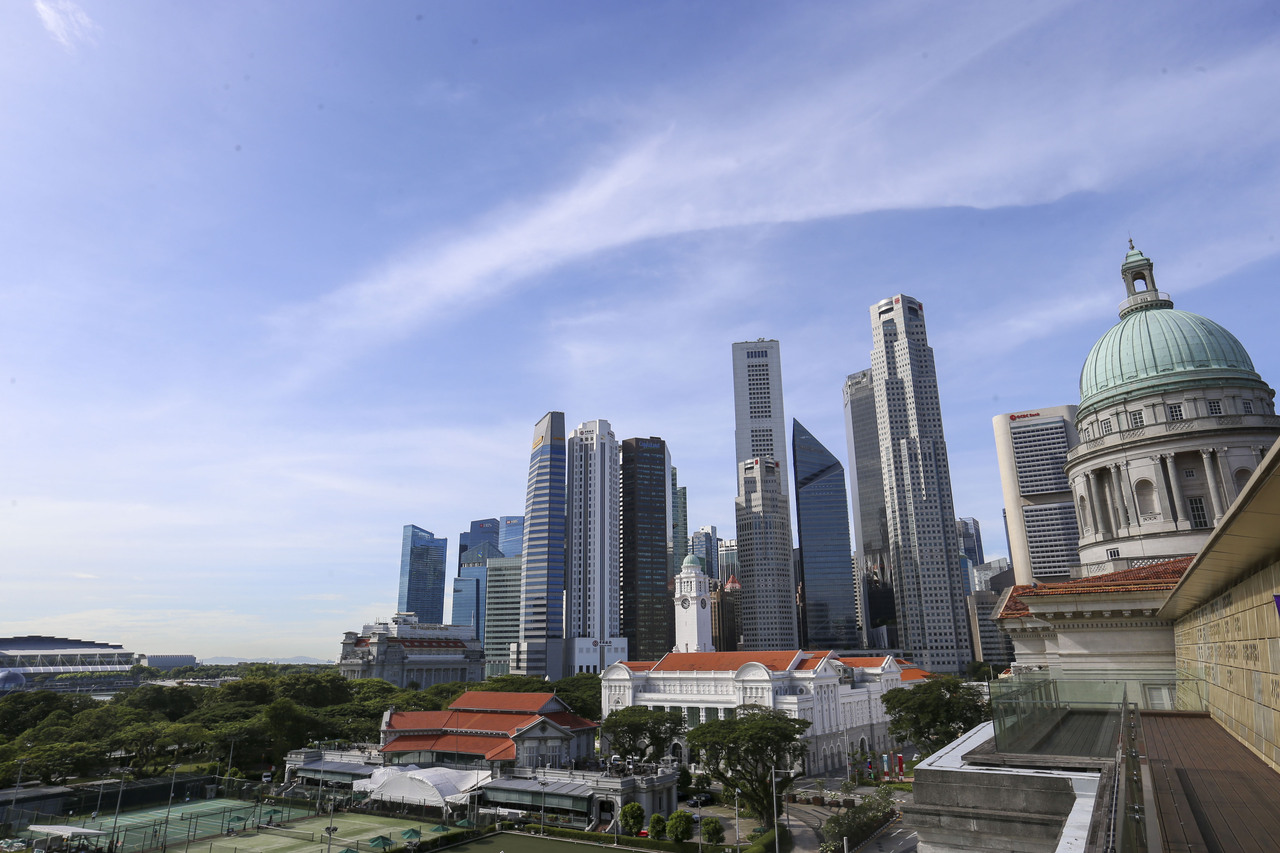Budget debate: Some public sector redevelopment projects likely to require in-depth heritage studies
Sign up now: Get ST's newsletters delivered to your inbox

National Development Minister Desmond Lee announced a new heritage impact assessment framework in Parliament on March 8, 2022.
ST PHOTO: SAMUEL ANG
Follow topic:
SINGAPORE - Large-scale public sector redevelopment projects may be subjected to in-depth heritage studies under a new framework to involve stakeholders and the public more in decision-making processes.
Announcing the new heritage impact assessment (HIA) framework in Parliament on Tuesday (March 8), National Development Minister Desmond Lee said it marks an important milestone in the maturation of Singapore's heritage evaluation process.
Under the new framework, public sector projects that are likely to cause major impact to significant heritage sites will need to be assessed by the Urban Redevelopment Authority (URA) and the National Heritage Board (NHB) to determine if heritage studies or other mitigating measures are required.
Should heritage studies be recommended, their scale and scope will be decided in accordance with the context of the site.
HIAs, which include external consultants, are the most extensive heritage studies that Government agencies can call.
Responding to MP Xie Yao Quan (Jurong GRC), who had asked for an update on plans for a HIA framework, Mr Lee said the authorities expect that HIAs will be triggered only for "larger-scale public development projects in areas of rich and complex heritage significance".
In a statement, the URA added that these are large-scale projects are ones that impact clusters of buildings and structures with potential heritage value, and which hold significance for multiple groups of stakeholders.
Where HIAs are not necessary, public agencies with technical expertise such as URA and NHB will continue with the existing process of assessing the impact of redevelopment projects on heritage themselves.
A URA spokesman said that as HIAs require additional time and costs – including an in-depth external assessment – the authorities have to be judicious in calling them.
“The current evaluation process remains relevant and comprehensive in addressing most sites undergoing redevelopment,” said the spokesman.
While URA did not define "large-scale" or give specific examples of future sites that might require HIAs, it said these might include projects such as future housing estates and business centres.
For redevelopment projects that require HIAs, developing agencies will commission external consultants to assess in detail the potential impact of development works, the adequacy of proposed mitigating measures, and recommend strategies to incorporate built heritage elements in the new developments, said URA.
It added that relevant stakeholders and the heritage community would be engaged at "key project milestones", such as when the scope of a study is being determined, and when preliminary findings are ready.
Mr Lee said findings from HIA studies will be published for public feedback unless there are security or other concerns. Agencies should consider and incorporate as much feedback as possible when fine-tuning their measures to mitigate any impact on built heritage.
URA said the implementation of the framework, which was developed in partnership with NHB, "exemplifies the Government's commitment to strengthen transparency and accountability in our planning decisions".
It added that the HIA framework was informed by a pilot large-scale heritage study of the Old Police Academy site in Mount Pleasant, conducted between August 2018 and September 2019. The authorities had decided to retain six significant heritage buildings in the area after the study.

Built in 1931, 153 Mount Pleasant Road is an art deco bungalow, known as the Senior Police Officers’ Mess.
PHOTO: URA
While heritage advocates welcomed the HIA framework, they said more clarity was needed on when an HIA would be called.
Singapore Heritage Society president Jack Lee said he hopes that the authorities will publicly share the criteria they use so that the public can be more informed when they are invited to give feedback.
Agreeing that the criteria could be clearer, Professor Ho Puay Peng, head of the National University of Singapore's Department of Architecture, said the HIA process and engagement should be open and transparent for the community's buy-in.
International Council on Monuments and Sites Singapore president Yeo Kang Shua noted that while there is no standardised HIA format internationally, it is important that the scope of each study takes into account the interests of various stakeholders, including local communities.
"As we mature as a nation, HIAs will be an important platform to build consensus on what our heritage is," he said.
Dr Lee said that it would be ideal for private sector projects to also require HIAs.
"Private sites can have much heritage significance - the Government recently confirmed this when it decided to conserve Golden Mile Complex," he said.

Reiterating the instances in which a HIA will be called, a URA spokesman said large-scale development projects impacting clusters of buildings are typically public projects. Private projects, which are generally smaller in scale, will continue to be assessed using existing approaches, said the spokesman.
Dr Lee also said it will be important for local universities and professional bodies to equip people with the skills to carry out HIAs and environmental impact assessments (EIA), to prevent Singapore from being dependent on foreign firms and professionals for such studies.
He suggested that the Government consider giving incentives, including funding, to build up local expertise.
Separately, Minister of State for National Development Faishal Ibrahim said that the Kampong Gelam Alliance – a group of local businesses, institutions, landlords and residents in the area – will engage the community and public later this year to seek their ideas to rejuvenate the heritage precinct.
Dr Faishal noted that heritage precincts have taken a hit during the Covid-19 pandemic, with falling footfall affecting businesses.
He said that as an advisor to the alliance, he will work closely with existing and new community stakeholders to preserve the heritage that makes Kampong Glam distinctive, and refresh it so it remains relevant for future generations.

